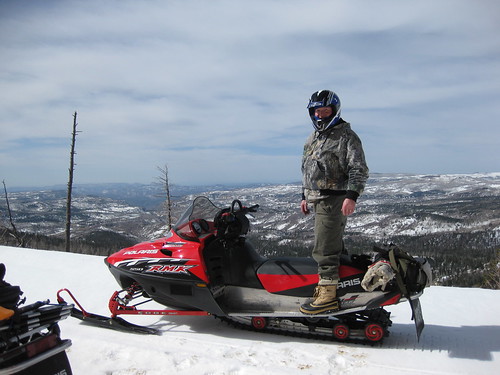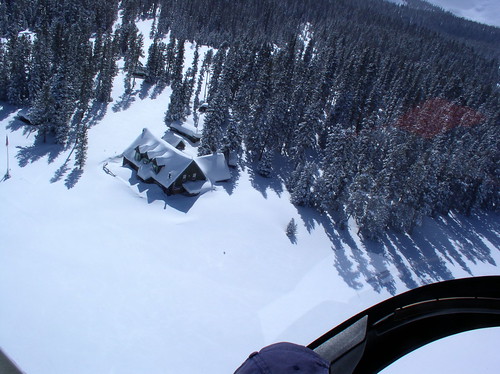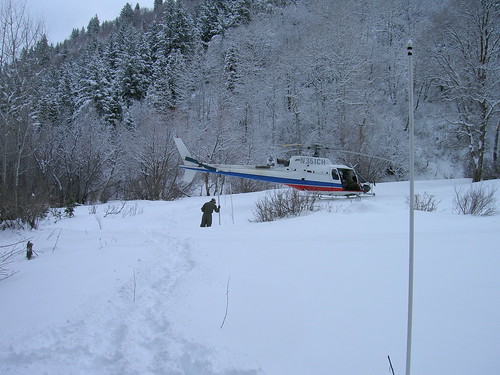
Hydrologist Randy Julander has been managing Utah’s snow survey program for the past 24 years.
“To say I enjoy my job is an understatement,” said Hydrologist Randy Julander. “Monday is my favorite day of the week, because I get to go back to work.”
As the Snow Survey Data Collection Officer in Utah, Julander’s job is a mix of science, adventure and artistry. He weaves information from data. “Data are just numbers on a page; but information – now that’s something meaningful, something that informs decision makers,” he explained.
“In Snow Survey we produce useful products that people find exceptionally valuable. As a scientist, the satisfaction you get working with these amazing datasets is second to none.”
During Julander’s 24 years with the USDA’s Natural Resources Conservation Service, technology has advanced rapidly. “Our ability to serve customers has increased by an order of magnitude,” he said.
When he started back in 1991, typewriters and scotch tape were the tools used to create Water Supply Reports. “Each month it took us 10-12 days to finish those reports,” said Julander. “Then we had to mail them. Snail mail, of course. That’s another five days.”
These days, the Utah Water Supply Reports are posted online and emailed to subscribers by the second working day of the month. Not only are the reports timelier, they’re also richer in data.

During winter, over-snow vehicles provide the best means to reach many snow courses.
“Back in the 1990’s our reports were eight or nine pages long. Now they’re about 75 pages,” said Julander. “When I started, we were collecting between 300 and 400 data points a year. Now we’re collecting about 25 million a year.”
The spread of the automated snow telemetry (SNOTEL) network accounts for the dramatic increase in data. “Manual measurements gave us of a monthly snapshot of the snowpack; SNOTEL sites send us hourly updates. In addition to snow depth and water content, which we’ve always measured, SNOTEL also measures air temperature plus the moisture level and temperature of the soil at various depths.”
For a scientist, these datasets are amazing. For an adventurer, the thrill is in data collection. Each winter, Julander travels the remote mountains of Utah, either over them in a snowmobile or above them in a helicopter.

Flying to work offers a unique perspective of Western snowpack.
“From the helicopter I’ve seen packs of coyotes, herds of elk and herds of deer. I remember one time I saw a herd of deer, hundreds strong. Near the back of that great herd was an albino deer,” said Julander.
As the most experienced manager in the Snow Survey Program, Julander also has an elevated perspective on the program’s future. “Our advances have been staggering, and that trend will continue. Before too long we’ll be using satellite and LIDAR data. In 50 years people will look back and say, ‘Wow, look at how those old-timers did it.’”
Julander is a regular instructor at the annual snow survey training. He’s an elder statesman within the program, and serves as teacher and mentor to many. “One of the greatest challenges is training the new talent,” he said. “When you have so much experience lodged in your brain, sometimes it’s hard to explain why things are the way they are.”
Maintaining that continuity of operational knowledge is important, because Julander plans to retire in 2017. “I need to give those talented young folks a shot at this position,” he said. “Between hunting, fishing and playing with my grandkids, my life is so full that I feel like I never have enough time.”
When he finds time, he’ll be able to reflect on a fulfilling career with the USDA. “My inclinations and skill set match this position perfectly. It’s been more than a dream come true — Cinderella’s got nothing on me.”

Some snow courses are only accessible via helicopter.
No comments:
Post a Comment
Note: Only a member of this blog may post a comment.